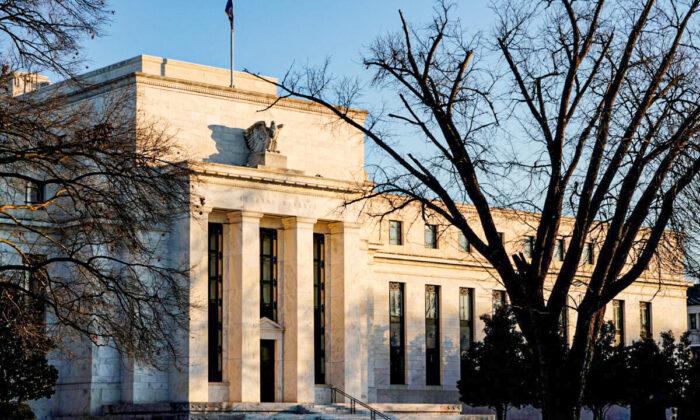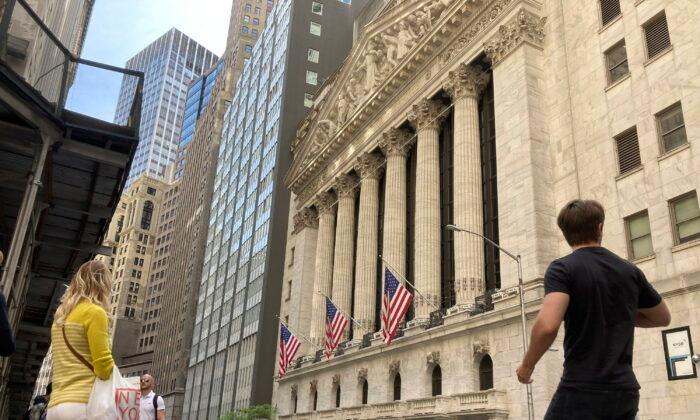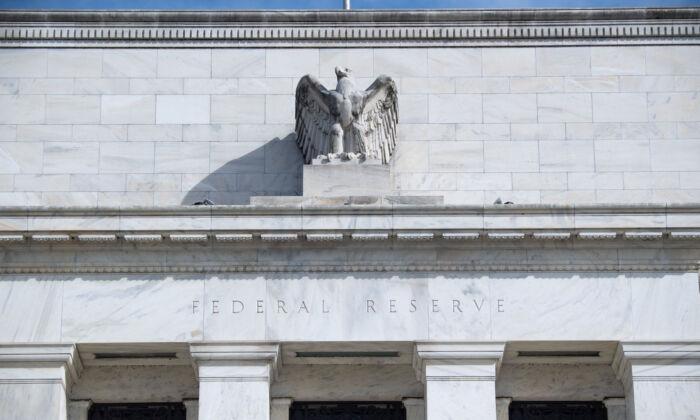These are words I have heard my entire adult life. Every time rates drop, a lending professional always encourages me to take out the biggest loans I can, as rates will assuredly never be this low again. For the past 40 years, rates continued to fall, despite the opinion of many experts that rates can only go up.
It’s a believable story, after declining for 40 years, what goes down must at some point go up. This is particularly true when it comes to the Federal government, which runs persistently large deficits that it manages to finance at even lower rates. At some point, lenders will likely demand higher coupon rates—but it never happens.
Interest rates are a function of many things, but primarily the supply and demand for money. For rates to rise, there must be a demand for money that exceeds the available supply of money. This is a concept seemingly lost on most pundits and policymakers who remain frustrated at why rates remain so low.
The banking system is currently flush with cash from depositors. Without any alternatives to earn a higher yield, depositors continue to pile up cash in the commercial banking system. The banks, who ideally would like to lend against this mountain of deposits, lack demand from potential borrowers.
With deposits exceeding the dollar amount of loans in the commercial banking system, the commercial banks are forced to purchase U.S. Treasury and Mortgage-Backed Securities to back the excess deposits. By doing so, a commercial bank is creating bank reserves with the cash, which it uses the interest from the bonds to pay interest to the depositors.
Rates don’t simply fall due to a shortfall of loans in the commercial banking system. They also fall due to the design of the monetary system. Few understand just how big of an impact the monetary system has on interest rates, which is a large part of why rates have fallen over the past 40 years and are likely to keep falling.
In a fiat-based monetary system, such as ours, new money is created when a commercial bank originates a new loan. Despite popular belief the Federal government and the Federal Reserve can create money, only the commercial banks have this power.
When there’s a large demand for loans, a large amount of money is injected into the financial system. This new money expands the money supply and can lead to inflation if too much money is chasing too few goods. The expansion of the money supply also leads to broad economic growth, as a fiat-based system needs an ever-expanding money supply.
To attract money into the banking system to meet the high demand for loans, interest rates rise. When the demand for money, or lending demand, exceeds the supply of money, or the dollar amount of deposits, interest rates must rise. The opposite is true when the dollar amount of deposits exceeds lending demand: Interest rates fall to attract potential borrowers.
Borrowers are finicky as they have a high preference for lower rates. When rates do rise, lending demand tends to fall. This relationship is best seen in the mortgage refinance data, as borrowers prefer to lock in the lowest rate possible for their mortgage and will only refinance at a higher rate if they need to extract equity from their home.
When interest rates rise and borrowing demand falls, there’s less new money created by the financial system. Without a large influx of new money into the financial system, the money supply growth slows along with inflation as there’s an insufficient amount of money to meet higher prices. Interest rates also fall to attract potential borrowers into taking new loans.
The reason rates have fallen over the past 40 years is that every attempt to drive rates higher has been met with a large decline in lending demand. The decline in demand is primarily from homeowners who aren’t interested in refinancing at higher rates. Based on the most recent weekly Mortgage Banker’s Association refinance application data, applications are down more than 50 percent from their 2020 highs when rates were much lower.
While the popular belief is rates can only go higher, without strong and persistent demand for new loans, rates are more likely to fall. As demand for loans continues to fall, as evident by the continued decline in refinance mortgage applications, rates will eventually need to decline to spur lending demand. As the money supply growth slows due to the lack of new money being created, the economy will slow and inflation will subside as demand declines.
It’s a believable story that rates can and only must go up, but, based on the design of our monetary system and the supply and demand for money dynamics, rates are more likely to go fall. All the experts who believe rates must rise will once again be baffled as they eventually fall to new all-time lows.





Friends Read Free